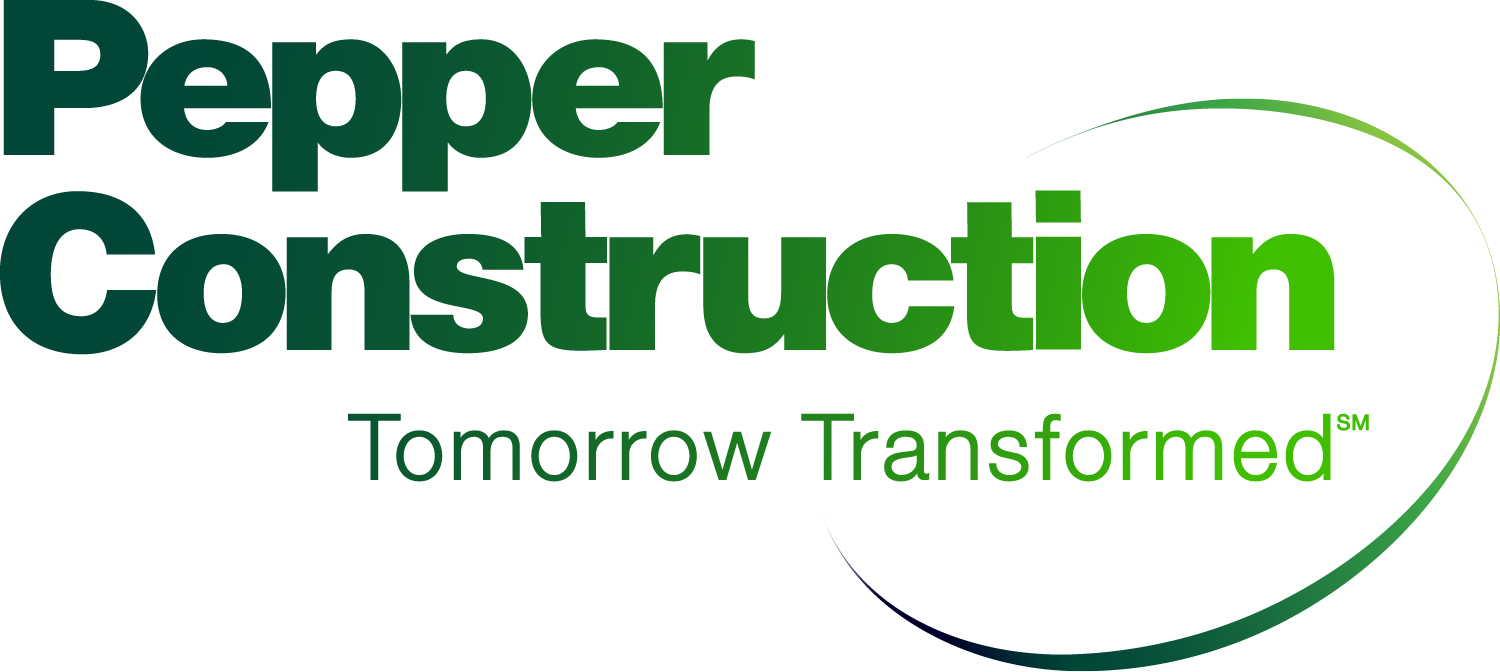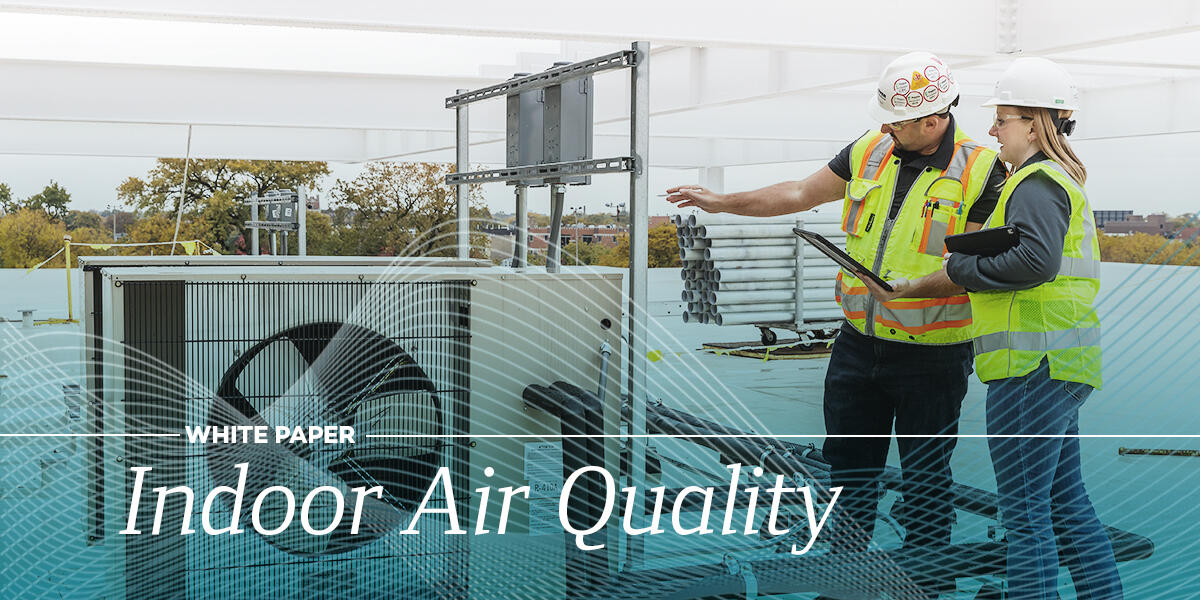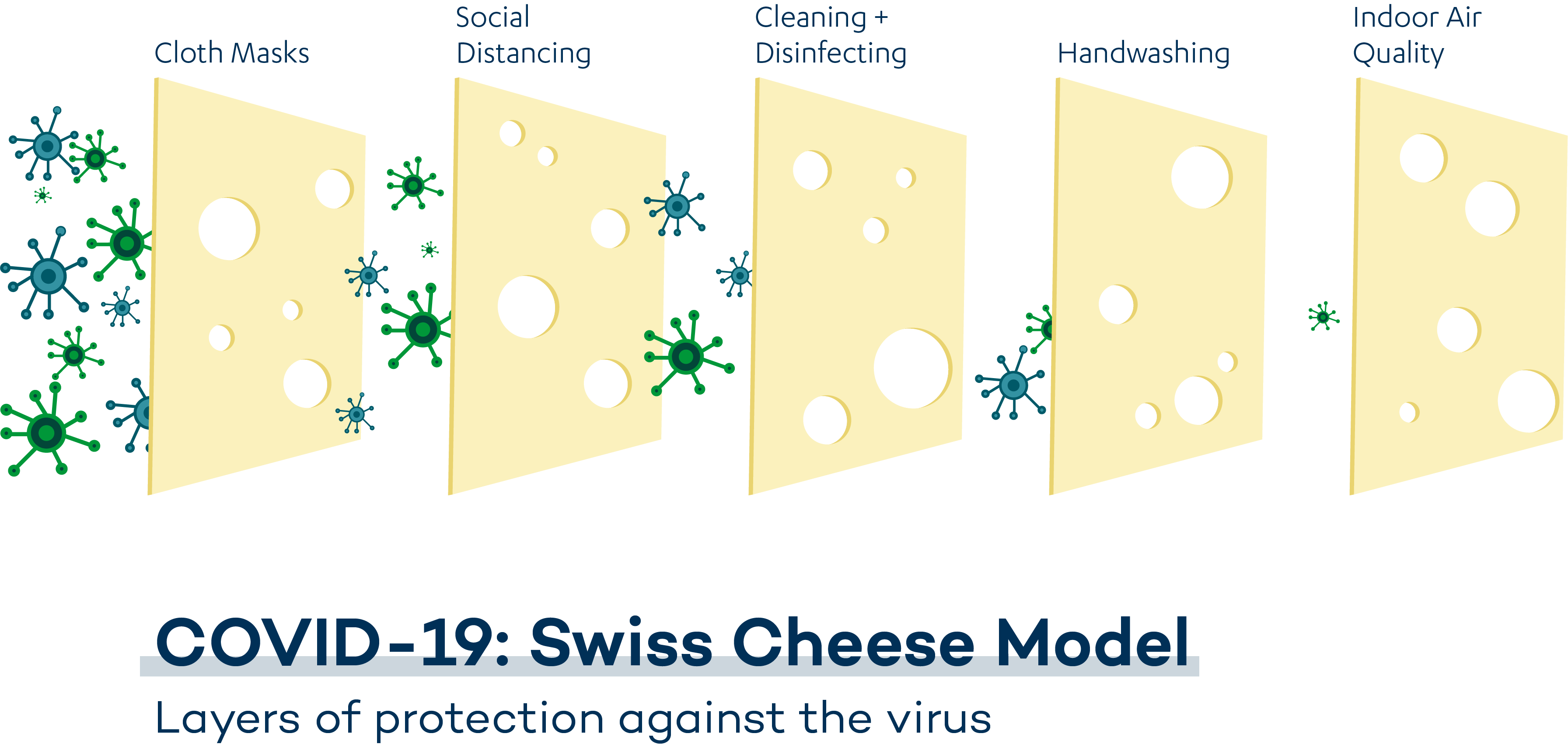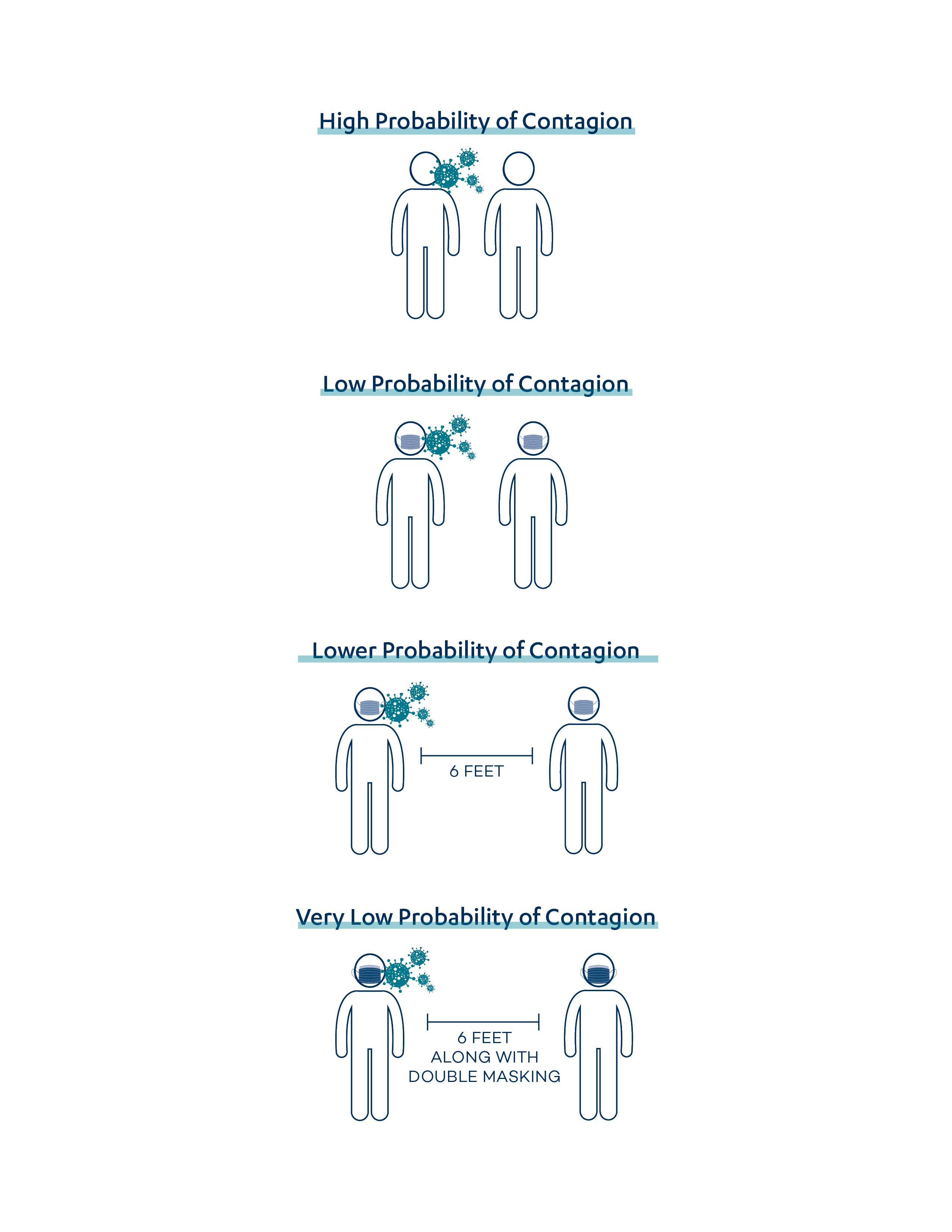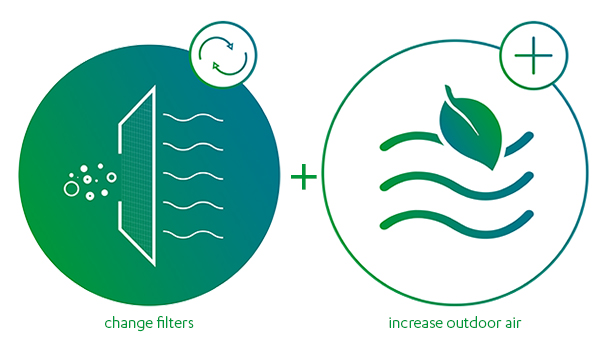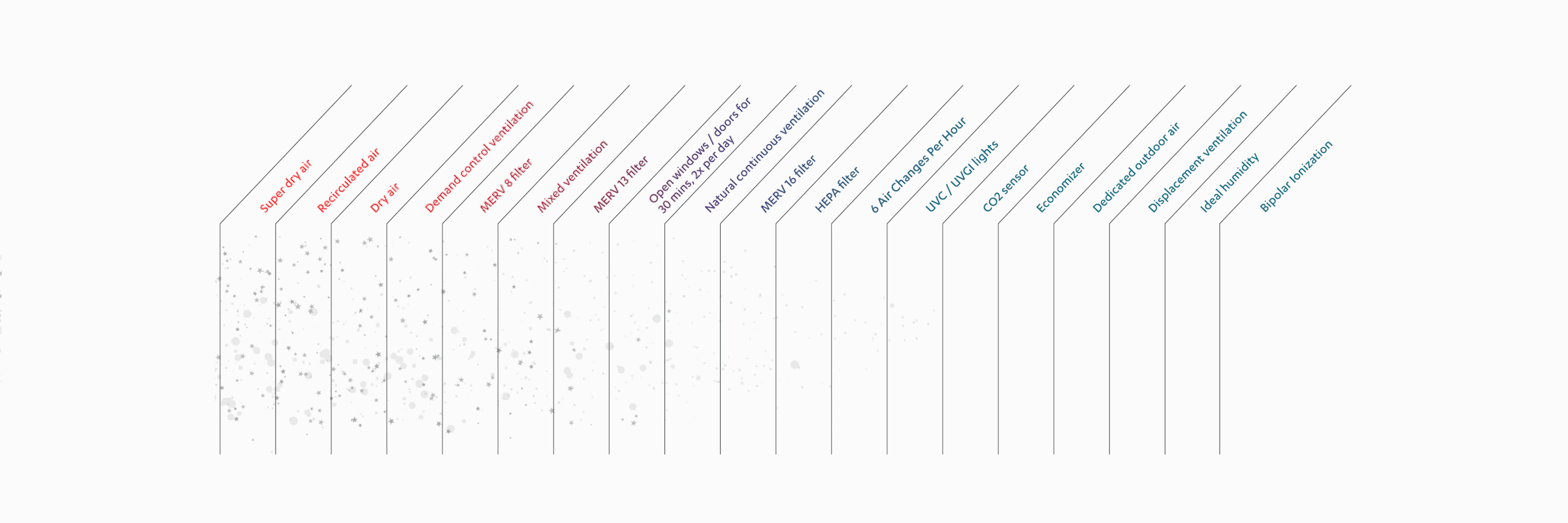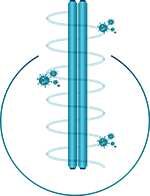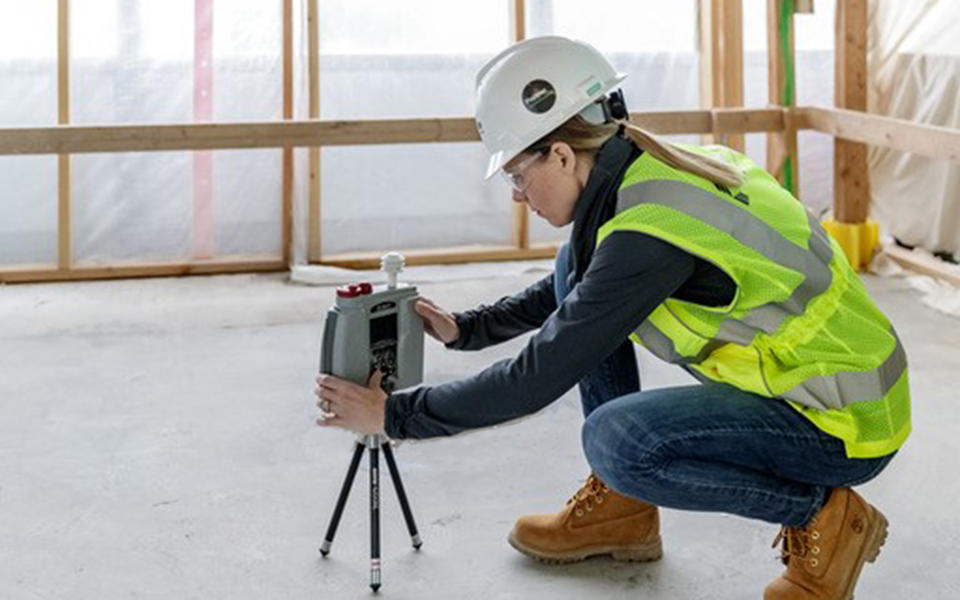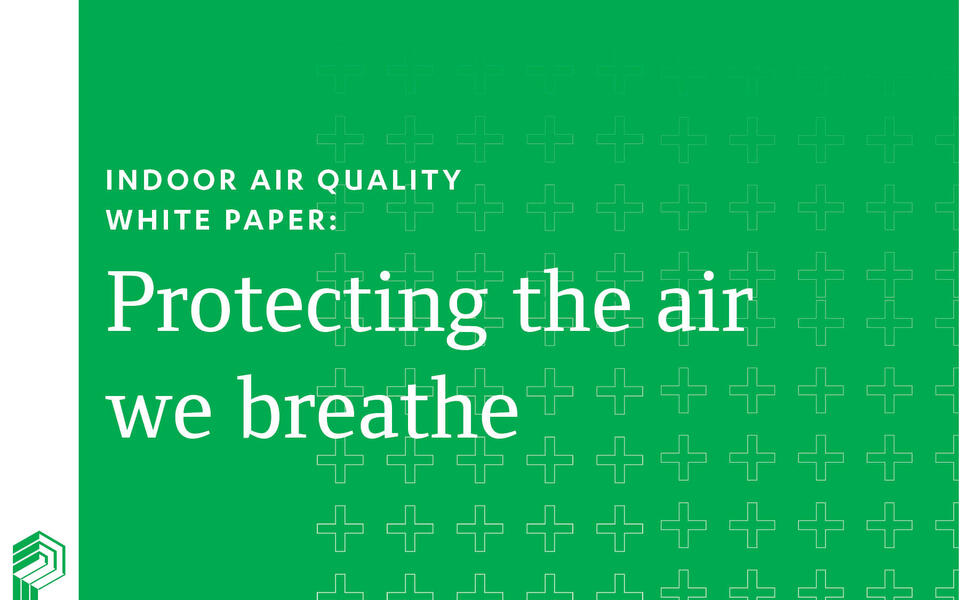High performance & sustainability
An overview of the factors that impact indoor air quality and strategies for creating a healthier post-COVID-19 environment
As the pandemic environment continues to evolve, we have fielded a lot of questions with regard to upgrading systems and incorporating new products and technologies. To address these questions with our broader audience and in the context of improving indoor air quality as a whole, we've updated this white paper with new information.
The solutions below should be considered a layered strategy, similar to swiss cheese, where each layer has holes, and together it forms a solid mass. It's also important to note there is still no silver bullet solution. Continue wearing masks (CDC now recommends two), washing hands and social distancing to slow the spread of viruses and other pathogens.
For those who have already read our white paper, we've updated information about UVC/UVGI lighting to include a discussion on the caveats that are associated with these devices, as well as bipolar ionization, which we are incorporating into our own offices.
With businesses gradually reopening and schools leaning on remote learning, there remains a sense of caution about the spread of COVID-19. To ease people back into the workplace, employers are making changes that improve the indoor environment.
According to the FDA and CDC, the virus is thought to spread person-to-person, within approximately six feet and through respiratory droplets [aerosols]. As such, owners are turning their attention to learning more about their current building systems and improving indoor air quality.
This article summarizes our research about the factors that affect indoor air quality, the characteristics of the different mechanical systems and the enhancements that should be made to improve them.
Incremental measures for improving Indoor Air Quality
Not all buildings are equal, and their operations require different measures. A hospital requires a more sterile environment than an office building. The good news for those who have not considered their mechanical systems until now is that improving the indoor environment doesn't require an overhaul of the building's systems. In fact, we recommend solutions that have the highest impact for the lowest cost.
Where should owners begin to make improvements? Many businesses have increased cleaning and disinfecting, and some have cleaned the ductwork. The virus attaches to dust particles, which means it can end up in the air ducts. However, the likelihood of the virus staying in the ducts is low. So, while it is a good idea to elevate the base conditions, research shows no direct correlation between duct cleaning and eliminating the virus.
Just like we are encouraged to wash our hands often, the building requires more frequent measures as well.
Factors that affect the spread of the virus indoors
There are two simple strategies you can start with today: changing filters and adding more outdoor air.
Higher quality indoor air provides healthier conditions for building occupants, and the building’s mechanical system is where the quality of indoor air starts. The following chart illustrates how indoor conditions and strategies lead to higher or lower airborne transmission rates.
Mechanical System Factors in a Post-COVID-19 Analysis
When evaluating the mechanical systems, we found the following factors to be the most impactful in how they work together to affect the spread of the virus indoors.
Humidity Level
The leading factor in airborne COVID-19 transmission within the built environment is the relative humidity. Most buildings focus on dehumidifying the space. Our research found the ideal humidity space condition should be between 40%-60% to reduce airborne virus transmission. If the humidity level rises above 60%, the microbe and virus growth is facilitated. If it goes below 40%, the virus remains in the air for a longer time and spreads more easily. Additionally, the human immune system does not function well around 20% relative humidity, leading to additional health and performance complications. Every building type is different depending on the function of the space, and, therefore, the designed humidity levels for your space should also be taken into consideration. When modifying the mechanical systems to control humidity, the building envelope should also be evaluated and upgraded to prevent condensation and mold growth. Because humidity control requires a whole-systems approach, it can become more complex.
Amount of Fresh Air
Simply put, the more fresh air, the better. Air distribution systems should introduce outdoor air at a rate high enough to push out airborne pollutants. A guide of six air changes per hour for a 10-foot by 10-foot room is recommended for a mechanical's air exchange rate. The safest indoor space is one that constantly replaces stale inside air with outside air. In any room, the more people inside, the faster the air should be replaced. Some ventilation systems cannot meet this criterion. Mixed ventilation systems circulate airborne pathogens throughout an entire room, which is a major issue with many HVAC systems. Displacement and single-direction ventilation pose a smaller risk of infecting a large group withing a common space. As the systems work together, optimizing heating and cooling with humidity can be difficult; if an increase of outdoor air is planned, the system must be analyzed for potential issues. If your building has operable windows, opening them is a good start. It seems simple, but putting a box fan in the window or opening the windows for at least 30 minutes 2x a day is another method to increase the amount of fresh air in the space.
Filtration
After analyzing the humidity level and amount of fresh air, installing MERV-13 filters or better in ductwork can improve the general air quality. There is currently a filter in development with a mesh that incorporates copper deposits to kill pathogens that come into contact with the filter. Upgrading and replacing filters is considered a baseline and cost-effective measure.
CO2 Sensors
How do you know if the building is providing enough fresh air? Every time you exhale, you release CO2 into the air. Since COVID-19 is most often spread by breathing, coughing or talking, the CO2 levels will show the potential presence of infection and estimate if there is enough fresh outside air. CO2 sensors create a "smart" indoor environment by sensing when it is occupied and timing the flow of outdoor air into the space when the level of CO2 rises. They are designed to create efficiency and provide cost savings while maintaining a healthier indoor environment. Keeping the CO2 levels below 600 ppm is a good recommendation.
UVC/UVGI Lights
When UVC light is used for germicidal purposes, it is referred to as UVGI, ultraviolet germicidal irradiation. Installing UVGI lamps inside ductwork can help protect occupants from exposure. The UV waves damage the virus' DNA, which stops the virus from feeding and reproducing and thereby kills it.
UVGI lamps can be retrofitted into existing ductwork, installed at cooling coils or in common room walls with ceiling heights greater than seven feet. These lights generally cannot inactivate a virus that is not directly exposed, such as covered by dust or soil, embedded in porous surfaces or on the underside of a surface. Because the effectiveness of UVGI lamps in inactivating the SARS-CoV-2 virus is all about exposure time, they are best used for treating surfaces and in areas where the air flow is slowest, to ensure that it is irradiated for a long enough time.
The US Food and Drug Administration regulates all UVC lamps, and they have issued some warnings that should be considered:
- Proper installation is critical, as there have been reports of skin and eye burns resulting from improper installation in rooms that people occupy.
- Some UVC lamps generate ozone so it's important to use devices with a UL certificate or a third party review.
- Some UVC lamps contain mercury. This can be verified by a ROHS compliance certificate.
Bipolar Ionization
One of the most effective solution for purifying the indoor air is bipolar ionization. Ions are naturally present outdoors and work to clean our air through energy sources found in nature like water and sunlight. Bipolar ionization brings this concept to our indoor environments, without producing ozone or other harmful byproducts.
Bipolar ionization works by creating and releasing ions into the airstream using the HVAC system. The ions bond with particles and pathogens in the air, forming clusters and making it easier for the HVAC system to remove them from the air. When the ions attach themselves to the particles, it also changes the molecular makeup of the particles - neutralizing the contagion and making them ineffective.
Evaluating different mechanical systems for airborne transmission
There are a variety of mechanical systems, and they all have different characteristics. Some inherently lean toward lowering airborne transmission rates than others, but all can be improved to provide healthier indoor air quality. The table below outlines typical mechanical systems and recommended features to help make those systems Post COVID ready and lower the building’s airborne transmission rate.
Upgrading Mechanical Systems for Improved Air Quality
Considering operating efficiency
Increasing ventilation with a low relative humidity level requires a greater air exchange rate, which uses more energy. There has always been a battle between increased ventilation and operating efficiency, but especially today, health is the most important consideration. Particularly for clients seeking to achieve sustainability goals, there are ways to find efficiency elsewhere to rebalance the building's operations.
It's important to note that HVAC systems are designed and installed specifically to the spaces they serve and thus require an independent analysis to identify the right solution for each facility. Our High Performance team can evaluate your building’s existing mechanical system and offer recommendations for enhancing the building’s air quality to lower airborne transmission potential. We review mechanical equipment schedules, sequencing of operations and conduct a brief site walk with the building engineer. From this information, we build a report with recommendations and pricing to make your mechanical system Post COVID ready. Contact us if you are interested in more information about our research or if you would like us to evaluate your building's system.
You may also be interested in this session from 2020 Greenbuild:
Research references:
2019 Novel Coronavirus (COVID-19) Pandemic: Built Environment Considerations To Reduce Transmission
Additional guidance for use of fan coils and avoiding recirculation
AHRI - Common Humidifiers Chart
An Evaluation of Ultraviolet Germicidal Irradiation (UVGI) Technology in Health Care Facilities
Annual simulation of in-duct ultraviolet germicidal irradiation system performance
Antibiotic Resistance Can Spread Through The Air, Scientists Warn, And Yes You Should Be Terrified
Back to basics: VRF systems
Can HVAC Systems Spread COVID-19?
Direct Steam Injection Humidification: Is It Safe For Building Occupants?
Estimation of tuberculosis risk and incidence under upper room ultraviolet germicidal irradiation in a waiting room in a hypothetical scenario
Harvard Medical School - Optimize Occupant Health, Building Energy Performance and Your Revenue Through Indoor-Air Hydration
High Humidity Leads to Loss of Infectious Influenza Virus from Simulated Coughs
Humidification: Challenged by humidity
HVACR Equipment/Components
Integrating IAQ control strategies to reduce the risk of asymptomatic SARS CoV-2 infections in classrooms and open plan offices
Low ambient humidity impairs barrier function and innate resistance against influenza infection
Mold infections leave one dead and force closure of operating rooms at children’s hospital
The role of additive manufacturing and antimicrobial polymers in the COVID-19 pandemic
Tech Hour #1: Optimize Occupant Health, Building Energy Performance and Revenue through Indoor-Air Hydration - November 19, 2019
This Inexpensive Action Lowers Hospital Infections And Protects Against Flu Season
Transmission of COVID-19 virus by droplets and aerosols: A critical review on the unresolved dichotomy
Ultraviolet Air and Surface Treatment
UV Germicidal Irradiation: CAn Ultraviolet Light Kill COVID-19?
Variables for Retrofitting with VRF
Ventilation control for airborne transmission of human exhaled bio-aerosols in buildings
Ventilation rates and health: multidisciplinary review of the scientific literature
Why measure CO2 in HVAC applications?
https://www.achrnews.com/articles/143268-chilled-beam-applications-grow-in-us-market
About the Author

